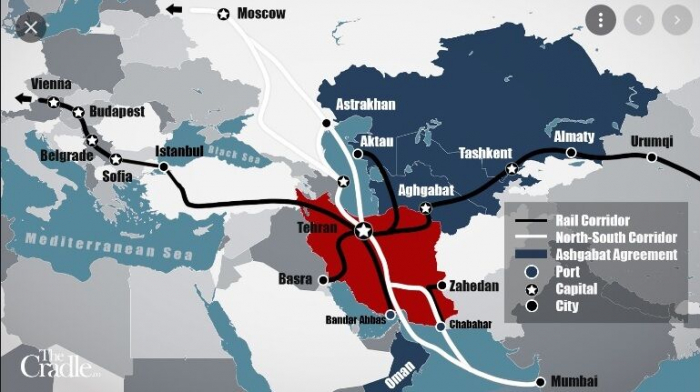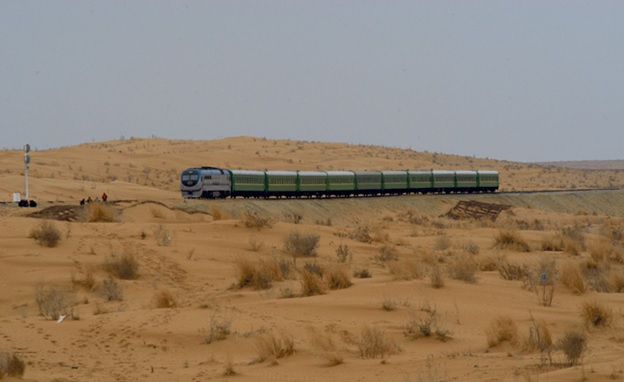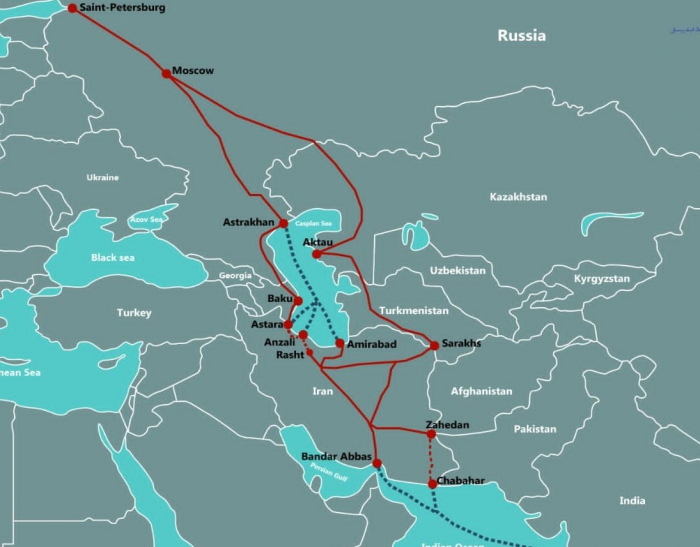The North-South corridor has three routes: The Eastern (runs through the east shore of the Caspian), Central (passes through the Caspian Sea) and the Western (runs along the west shore of the Caspian). Rauf Aghamirzayev, a transport and logistics expert, has assessed the potential and prospects of these three routes in his interview to AzVision.az.
‘There are transport routes and corridors running through Azerbaijan in North-South, East-West, and South-West directions. The first talks on the North-South corridor were initiated 23 years ago, as per relevant agreements among Russia, India, and Iran signed in 2000. Azerbaijan joined the project in 2005. However, the project has taken a different course due to complexity of geopolitical agenda of the past two decades. The corridor was initially supposed to run from Mumbai port in India to Helsinki, but it now promises an access to the south for the sanction-pressed Russia. Russia’s dependence on the countries of this route has now made the agenda.
The project has 3 segments. The eastern segment is the Russia-Kazakhstan-Turkmenistan route. Turkmenistan has access to Iran through two railways: the Sarakhs and Incheh Borun passages, launched in May 1996 and December 2014. These passages make up one portion of the Kazakhstan-Turkmenistan-Iran railway and have been integrated into Iran’s railways system. Indian investors have been long-term leasing Iran’s Chabahar port opening to the Indian Ocean within the project. They are now hard at work to build additional segments of the railways to connect it to the network.
As for Azerbaijan, there is no other country offering to reduce the distance between Russian and Iran by up to 500 km. This is the shortest and geographically most convenient way. However, it has a missing element. In 2017, Azerbaijan installed a railway from our Astara to Iran’s Astara. We also leased a 35-hectare land in Iranian Astara for 25 years and started construction works for a terminal. The Qazvin-Rasht portion of the Qazvin-Rasht-Astara railway was launched for exploitation in 2019. The missing portion of that route is the Rasht-Astara segment, which covers an area of approximately 162 km. Azerbaijan had also offered a loan at the time to construct this segment. The Russian side has allocated a loan of 1.3 billion USD. The loan targets electrifying both the Rasht-Astara segment, and the Incheh Borun passage, the road passing through the Turkmenistan side.
There is also a sea route apart from the segments I have listed.’

- Which countries are more interested in participating in the sea route?
‘The route over the Caspian is between Iran and Russia only. So, what could the downside of this route be? We currently know that the Caspian is receding, which is more visible towards the north of the sea, which is shallower. The deadweight of the ships arriving at those ports were already low enough, but they are going to drop even more. The ships can enter these ports half-loaded, which is not feasible in terms of efficiency. The north shore requires some expensive jobs done: the seabed needs dredging, the structure of the Astrakhan port expanding. Moreover, the Volga-Don canal also needs dredging. Not every ship could enter the canal in any case. Every canal has their own unique cargo ships, such as the Panamax ships for the Panama Canal, Bosporus-Max for the Bosporus Strait. The Volga-Don max vessels can operate in this canal correspondingly.
One of the advantages of the sea routes over others could be the involvement of two countries only, meaning fewer border crossings. However, the problems we listed above make the efficiency of this route rather questionable.’
- What about the Western route?
‘The Western route running through Azerbaijan is the shortest. On the other hand, Iran is building a railway to Ardabil from Miyaneh station, located on the Teheran-Tabriz route. They have also reached an agreement with the Azerbaijani side to build a line connecting Ardabil to Imishli in the future. They must first install an approximately 250-km-long line from Ardabil to Parsabad. Considering all these projects, the Western route will end up having not one, but there exits. It will secure an access to the South through Azerbaijan for Russia and an opening to the West through Azerbaijan for Iran, who is very interested in accessing the Black Sea ports.’
- What is Azerbaijan’s interest in these projects?
‘Azerbaijan’s importance in the region is on the uprise. The regional countries want to ship more freight. Do the neighbours have alternatives to offer? To be honest, they do. For instance, the Eastern route operates in Turkmenistan, but it is often clogged due to sand. The initial target for the Eastern route was 5 to 7 million tons of cargo a year, whereas the real annual numbers have been rather low. Turkmenistan is a closed country; therefore the complexity of border-crossing procedures leads to time loss and a drop in the volume of transported cargo.

The North-South transport corridor aims to transport about 30 million tons of cargo annually in the initial phase. They are planning to increase the numbers to 15 million for the Azerbaijani segment. The Russian side has announced that they will complete building the second railway, the ‘Samur-2’, to the Azerbaijani border by 2025.
The Azerbaijani side is also hard at work. We are rebuilding the Sumgait-Yalama railway. One of the ways is ready, the return route will be fully delivered within the next year. The Osmanli-Astara railway is also worked on. It was put into operation in 1941 and has been employed for many years. However, Azerbaijan wants to update it, transforming it into a two-lane electrified road, due to growing shipments and the ever-changing geopolitical reality. The country has also targeted relocating a portion of the Liman-Lankaran-Astara section of the railroad running along the sea-coast due to the tourism potential of the region.
Azerbaijan is open for shipments today, frankly announcing prospects as per the growth tempo in transportations.’
- There are several states participating in all three directions of the North-South project. Will it be possible to build a collaboration of all these parties within such a large-scale project, even if these routes run in various directions?
‘The idea does sound nice, albeit difficult to implement. The regional countries have different interests. For example, Iran does not have the same views for Central Asia and Azerbaijan. Russia, Kazakhstan, and Turkmenistan have already built a joint transport-logistics company, which manages all the logistical matters. I do not imply that overall collaboration is impossible, but it does not seem feasible in the current complicated reality. It might be possible further in the future. Living stuck between two sanctioned countries and developing ties with them is also quite difficult. The most important factor is for the sanctioned goods not to be transported through our territories, as it can pose risks for us. On the other hand, while Azerbaijan’s role in the East-West corridor is growing, we must also ensure shipments through the North-South to balance it, meaning, we must reduce risks. We do not oppose anyone, and our roads are open for cooperation. We continue our relations within our neighbourhood policy. The main thing is to stay away from problems.’
AzVision.az
More about:















































